Exploring the Architectural Landscape of Downtown Dubai
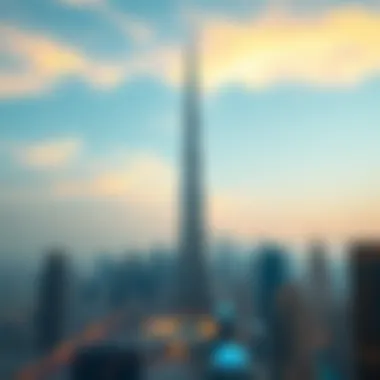
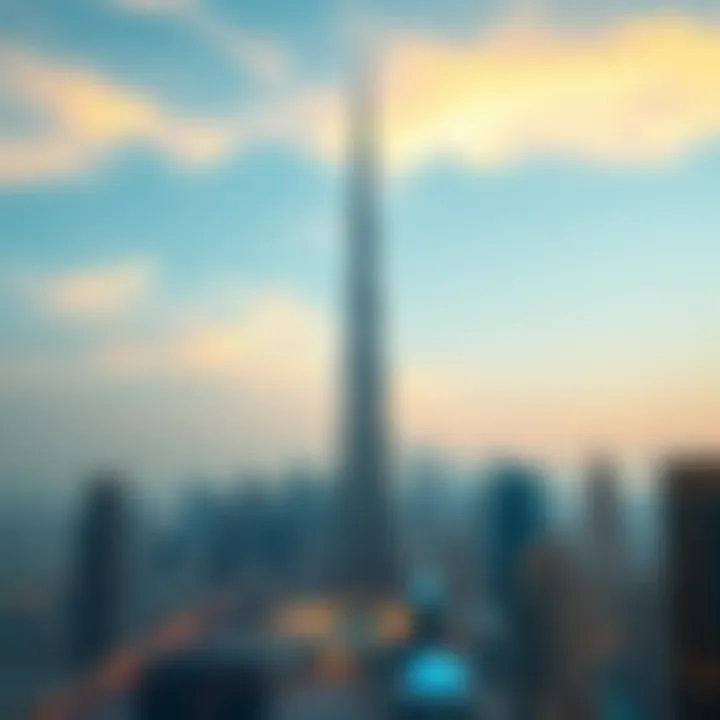
Intro
Downtown Dubai is a marvel of modern architecture, a place where skyscrapers kiss the clouds and cultural vibrancy fills the air. Nestled in the heart of the city, it showcases a unique blend of innovative designs and rich heritage. This thriving neighborhood stands as a testament to Dubai's rapid development, attracting homeowners, visitors, and professionals from around the globe. As we embark on this exploration of its architectural landscape, we’ll uncover not just buildings but the stories, cultural ties, and urban planning that shape this dynamic area.
Neighborhood Features
Landscaping Highlights
As you wander through the streets of Downtown Dubai, the landscaping plays a crucial role in creating an inviting atmosphere. The area is punctuated with lush greenery and well-manicured gardens, offering a stark contrast to the towering glass and steel structures. Parks like the Dubai Fountain Park and the sprawling Burj Park provide residents and visitors with serene spaces to relax or enjoy community events. The water features in these parks, especially the Dubai Fountain’s dancing waters, serve as focal points, bringing a soothing rhythm to the bustling environment.
Architectural Styles
When it comes to architectural styles, Downtown Dubai exemplifies a melting pot of influences. Here, contemporary and traditional designs intertwine, creating a rich tapestry. The Burj Khalifa stands tall with its sleek, modernist form, a symbol of ambition and innovation. In contrast, structures like the Dubai Opera reflect elements of Islamic architecture, blending curves and intricate patterns to create visually stunning facades.
- Skyscrapers: The prominent high-rises emphasize the city's economic prowess.
- Cultural Buildings: A mix of theaters and galleries showcase local art and performance.
- Public Spaces: These areas are carefully designed to foster communal interaction, with inviting plazas and walkways.
"The architecture of Downtown Dubai is not just about aesthetics; it’s a dialogue between culture and modernity."
Community Life
Local Events and Activities
Community life in Downtown Dubai is vibrant and engaging. The area hosts a myriad of local events that cater to diverse interests. Seasonal festivals, art exhibitions, and food fairs draw in crowds, fostering a sense of unity. The vibrant atmosphere during events like the Dubai Shopping Festival and New Year's Eve celebrations around Burj Khalifa showcases the pulsating heart of the community.
Lifestyle Amenities
In addition to its architectural splendor, Downtown Dubai offers a plethora of lifestyle amenities, enhancing daily life for its residents. Here, one can find:
- Luxury Shopping: The Dubai Mall is a shopper's paradise, featuring a blend of global brands and local boutiques.
- Gourmet Dining: An array of restaurants serves world-class cuisine, offering everything from traditional Emirati dishes to high-end international fare.
- Wellness Centers: Gyms and spas cater to health-conscious individuals, promoting a balanced lifestyle amidst urban hustle.
Combining architecture with community, Downtown Dubai fosters an environment where residents feel connected and visitors are continually captivated. As we delve deeper into its architectural treasures, we’ll explore how these styles not only reflect the past but also paint a vision for the future.
Prologue to Downtown Dubai
Downtown Dubai is often described as the heart of the city, a vibrant hub that embodies the spirit of modern architecture and cultural diversity. Historically significant and architecturally stunning, this area represents a blend of tradition and innovation. Understanding its layout, key landmarks, and role in the global context offers valuable insights, not only for those who reside here but also for tourists and professionals alike.
Defining the Downtown Area
Defining the Downtown area of Dubai is not simply about geographic boundaries; it's about the lifestyle and the vibrant energy that seems to pulsate through its streets. Encompassing the city's skyline, it includes landmarks like the Burj Khalifa, the Dubai Mall, and the Dubai Opera. This zone is more than just a collection of high-rise buildings—it is a lifestyle choice, replete with shopping, dining, and cultural experiences.
Within its limits, one can find beautiful public spaces and meticulously designed parks that stand in stark contrast to the towering glass structures. The overall layout boasts a seamless integration of leisure and business, ensuring that every square foot serves a purpose. The urban fabric here is woven with local art installations, fountains, and gardens that create an inviting atmosphere, making it a cherished space for both residents and visitors.
Importance of Dubai in Global Context
Dubai's role in the global landscape is pivotal, extending well beyond its Middle Eastern roots. It serves as a major financial hub and a gateway between the East and West. The city's strategic location has fostered opportunities that are hard to ignore.
Economic Growth: Over the past few decades, Dubai's economy has transitioned from oil reliance to a multifaceted economy that includes tourism, trade, and finance. Its policies encourage investment, drawing in global businesses seeking to tap into the fast-growing market.
Cultural Melting Pot: This city acts as a cultural bridge, showcasing an eclectic mix of traditions that resonate around the globe. For instance, the annual Dubai Shopping Festival and Expo attract millions, enriching the local culture with international influences.
Architectural Vision: In terms of architecture, Dubai is often regarded as an experimental ground where architects from around the world come to push the envelope. Buildings such as the twisting Cactus Tower and the sail-shaped Burj Al Arab symbolize this spirit of innovation.
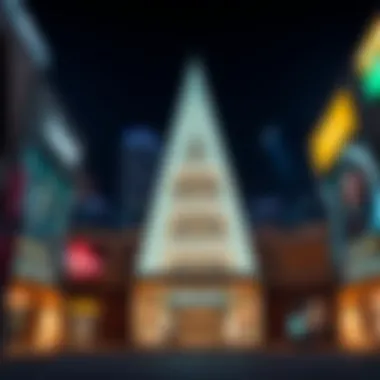
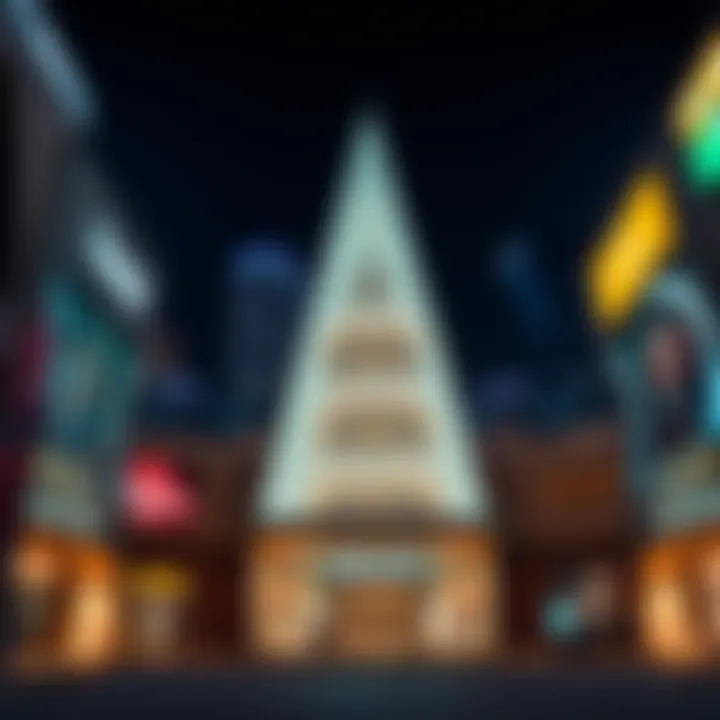
"Dubai is a city that embraces the future while respecting its rich heritage it's a blend that makes it truly unique."
Ultimately, the importance of Downtown Dubai extends beyond its undeniable aesthetic appeal; it encapsulates the aspirations of a nation striving for global leadership in business, culture, and architectural ingenuity. Understanding these layers is crucial for anyone looking to fully appreciate this remarkable facet of Dubai.
Iconic Structures in Downtown Dubai
In the heart of Dubai, a collection of architectural wonders stands unrivaled, showcasing not just the ambition of the emirate but also its commitment to innovation and artistry. Iconic structures in Downtown Dubai serve as a visual narrative of the city's evolution, capturing the imagination of both residents and tourists alike. These architectural masterpieces are more than just buildings; they represent emblematic landmarks that contribute to Dubai’s identity on the world stage.
Burj Khalifa: The Tallest Building in the World
The Burj Khalifa, soaring at an astounding height of 828 meters, is more than a mere skyscraper; it is a symbol of Dubai's audacity and forward-thinking ethos. Completed in 2010, it is the tallest structure in the world and an essential part of the Dubai skyline. Its unique design, inspired by the intersecting flowers of the region, elevates it beyond the realm of conventional architecture.
Inside the Burj Khalifa, visitors find an experience unlike any other. The observation decks at the 148th floor provide breathtaking panoramic views of the sprawling city and the deserts that envelop it. Tourists flock to its heights, eager to glimpse the ribbon of the skyline and take pictures that will define their journeys. More importantly, the Burj Khalifa has spurred significant economic growth in its vicinity, leading to a surge in real estate development and tourism that has transformed the landscape.
Dubai Mall: A Retail and Entertainment Hub
Next up is the Dubai Mall, which opened its doors in 2008 and has quickly become a haven for shoppers and thrill-seekers alike. Spanning over 1.1 million square meters, it holds the title of the world's largest shopping mall. But calling it merely a shopping center fails to do justice to its multifaceted nature.
The Dubai Mall hosts over 1,200 retail outlets, each designed to cater to a diverse clientele. From high-end boutiques to homegrown shops, it reflects the cosmopolitan nature of Dubai. Additionally, the mall is dotted with entertainment venues, including an aquarium, an ice rink, and a virtual reality park. Visitors can easily lose themselves for a day, navigating through entertainment options that blend leisure, shopping, and dining.
Additionally, the mall connects directly to the Burj Khalifa, creating a seamlessly integrated experience that promotes foot traffic and synergy in the area. The fountain shows outside add to the allure, creating an atmosphere that is buzzing with activity and life.
Dubai Opera: A Cultural Center
Stepping into the realm of cultural vibrancy, we encounter the Dubai Opera. Opened in 2016, this architectural gem is designed in the shape of a traditional dhow, paying homage to the region's maritime heritage. It has quickly established itself as a premier cultural destination, offering a platform for a wide array of artistic performances ranging from operas to ballets and concerts.
With a flexible design that allows it to transform its space, the Dubai Opera can accommodate audiences for various events, bringing a touch of class and elegance to the downtown area. It not only enriches the cultural tapestry of Dubai but also plays an important role in attracting visitors interested in the performing arts. Furthermore, its picturesque location with views of the Burj Khalifa and the fountain offers a unique experience that underscores the connection between art and architecture in this dynamic city.
In summary, these iconic structures not only define Downtown Dubai’s skyline but also contribute to its cultural and economic identity. They resonate with stories of ambition, creativity, and community, creating a backdrop that will continue to inspire both residents and visitors for years to come.
Architectural Trends and Innovations
The architectural landscape of Downtown Dubai is not just about impressive structures; it also reflects evolving trends and innovations that shape the city’s identity and functionality. This section discusses the significance of contemporary architectural trends, spotlighting sustainable practices, the integration of cutting-edge technologies, and unique design elements that define the fabric of downtown living.
Sustainable Architecture in Dubai
Sustainability has taken center stage in architecture worldwide, and Dubai is no exception. In a city that basks under the sun most of the year, harnessing renewable energy is not just an option; it's a necessity. Buildings are increasingly designed with energy-efficient systems, green roofs, and solar panels. This shift aims at reducing the overall carbon footprint and aligning with global climate goals.
For instance, many residential developments, such as the Dubai Design District, display remarkable eco-friendly features. These include rainwater harvesting systems and walls that can adapt to temperature changes, promoting energy conservation. Integrating elements like shaded areas and natural ventilation also helps keep indoor spaces comfortable, minimizing reliance on air conditioning.
"Sustainable architecture doesn’t just benefit the environment; it enhances community resilience and provides a better quality of life for all."
The use of recycled materials in construction is another trend gaining traction. This practice not only reduces waste but also lowers material costs, thus making development more economically viable.
Use of Advanced Construction Technologies
The construction industry in Dubai has embraced a range of advanced technologies to realize its ambitious architectural visions. Techniques like 3D printing, prefabrication, and augmented reality are not mere novelties; they're essential tools that streamline the building process and improve accuracy.
For example, 3D printing is revolutionizing how structures are conceived. The Office of the Future, recognized as the world’s first 3D-printed building, demonstrates how this technology can reduce both time and cost in construction. Instead of traditional methods that drag on for months, projects can be completed in considerably shorter timeframes with high precision.
Furthermore, augmented reality applications are now commonly used in architectural design and planning. They allow architects and planners to visualize buildings in situ, making it easier to identify potential issues before breaking ground. This proactive approach reduces errors and enhances collaboration among stakeholders, ensuring all voices are heard before the concrete sets.
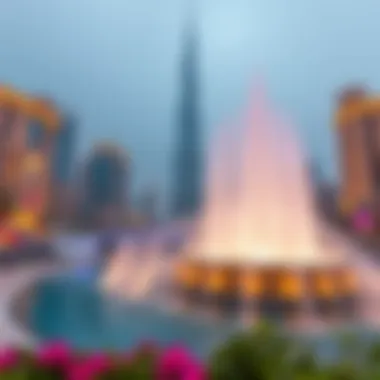
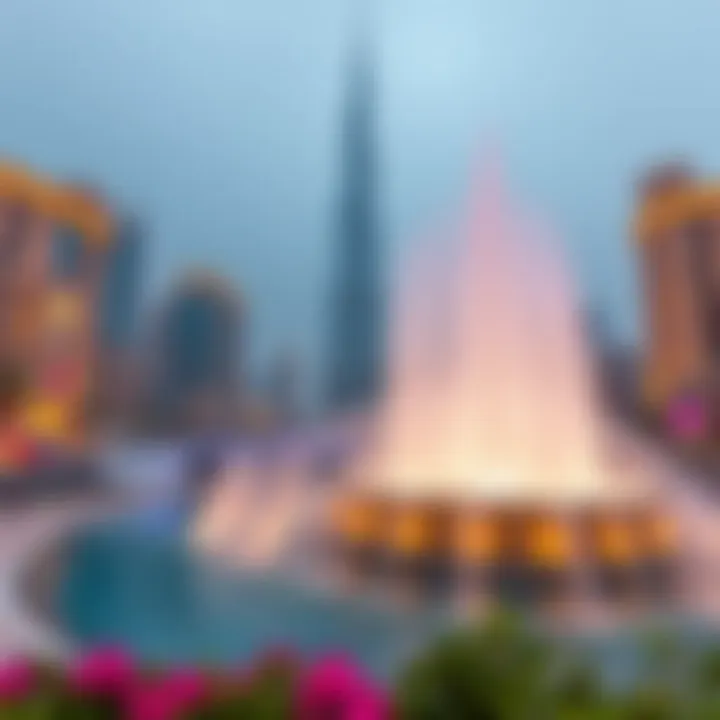
Unique Design Elements of Downtown Buildings
Downtown Dubai’s skyline is a canvas of unique architectural expressions, blending tradition with modernity. Put together, the iconic Burj Khalifa rise notably but are accompanied by buildings that showcase distinct styles. Elements like curved facades, intricate lattice work, and dynamic forms characterize many structures, creating a visually compelling environment.
Take the Dubai Mall, for example. While primarily a shopping destination, its architectural design speaks to the culture and lifestyle of the Gulf region. Features such as courtyards and water bodies evoke a sense of traditional Emirati designs, yet its execution is thoroughly modern. Likewise, the cultural epicenter, Dubai Opera, combines natural architectural dynamics with acoustics aimed at enhancing the live performance experience.
This commitment to unique design ensures that every building tells its own story while contributing to the collective narrative of Downtown Dubai. Further, the use of advanced glass facades and reflective materials allows structures to blend with their surroundings, enhancing aesthetics and energy efficiency.
For further insights into architectural practices, you can visit resources like the American Institute of Architects, ArchDaily, or explore sustainability in projects through United Nations Environment Programme.
In the heart of Downtown Dubai, architecture isn't merely a visual feast; it's an evolving saga of innovation and community resilience.
Community and Lifestyle in Downtown Dubai
Downtown Dubai is not just about striking buildings or sprawling malls. It's about the community and the lifestyle that residents and visitors enjoy daily. The area’s design fosters an environment where people can live, work, and play in a uniquely integrated manner. A city thrives when its inhabitants are engaged and satisfied, and Downtown Dubai is no exception.
Residential Developments and Offerings
The residential landscape in Downtown Dubai showcases a blend of luxury and modernity. Towering apartments and exclusive penthouses offer breathtaking views of the skyline, while at the same time, accessibility to community amenities is paramount. Developments like The Address Residences and Burj Vista provide not just living spaces but a lifestyle.
These residential offerings present a range of options for different demographics—from young professionals to families. In fact, the floor plans of many buildings are designed to accommodate the diverse lifestyles of its residents. On one hand, you have spacious units catering to families, and on the other, you find cozy studios that appeal to singles or couples looking for a modern city life.
Key Features of Residential Offerings
- World-Class Facilities: Most residential buildings in Downtown Dubai come equipped with state-of-the-art amenities, including gyms, pools, and communal spaces.
- Proximity to Work and Play: With major corporate offices and entertainment hubs within walking distance, residents enjoy a seamless balance between work and leisure.
- Diverse Community: The demographic mix adds vibrancy, ensuring events and gatherings have a rich blend of culture and perspectives.
Green Spaces and Parks
Amidst the concrete structures, greenery thrives as an essential contrast to the urban density. Parks like Burj Park and the Dubai Fountain area offer a breather from the hustle and bustle. These green spaces are not just aesthetic; they serve as community hubs where residents can unwind and connect.
The thoughtful landscaping, featuring native plants and water features, not only beautifies the area but also contributes to environmental sustainability. Walking trails and pet-friendly zones enhance the accessibility, allowing for leisurely strolls or vigorous jogs, thus promoting an active lifestyle.
Vital Aspects of Green Spaces
- Social Integration: Parks serve as gathering spots where community events and festivals take place, thereby strengthening community ties.
- Wellness Benefits: Access to green space encourages outdoor activities, essential for physical and mental health.
- Biodiversity: The design includes local flora, which is crucial for supporting wildlife and maintaining ecological balance.
Cultural and Recreational Facilities
Cultural offerings enrich the local environment of Downtown Dubai. The Dubai Opera stands out, providing a venue for performing arts that attracts international acts. Similarly, the Art and Culture Authority fosters local artistic talents, translating into a vibrant arts scene.
Recreational facilities further enhance the lifestyle here. Surrounded by cafes and restaurants, places like Souk Al Bahar provide not just shopping opportunities but also an authentic local experience. The contrast between traditional marketplaces and contemporary shopping environments offers residents and visitors alike the chance to explore various cultural facets.
Highlights of Cultural and Recreational Facilities
- Diversity in Entertainment: From theatrical performances to art exhibitions, there is something for everyone.
- Culinary Adventures: Downtown Dubai hosts an array of dining options from casual eateries to gourmet restaurants that reflect the city's multicultural nature.
- Community Engagement: Programs such as workshops and classes in the arts or cooking often foster interaction among residents, creating a closer-knit community.
Real Estate Dynamics in Downtown Dubai
The real estate dynamics of Downtown Dubai form a crucial backbone of not only the city’s economy but also its identity. The blend of modern architecture and contemporary lifestyle turns this area into a magnet for both investors and residents. In recent years, the property market here has witnessed a detailed evolution driven by various key factors.
Market Trends and Analysis
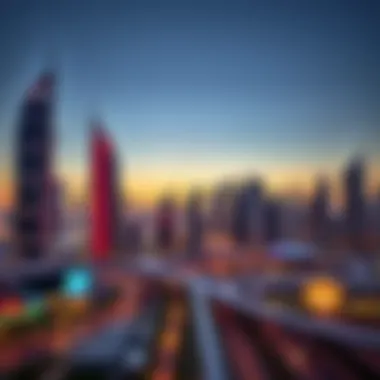
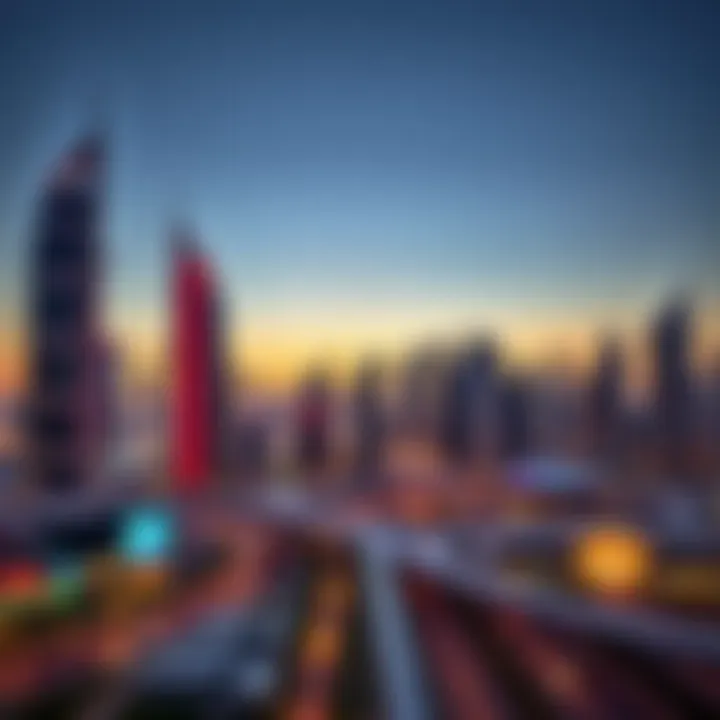
Investing in real estate in Downtown Dubai has become particularly appealing due to the area’s constant surge in popularity. Various reports indicate that property values in this sector continue to rise, largely attributed to the demand created by high-profile developments and the influx of expatriates.
Over the last few years, market trends reveal:
- Steady price increases: Properties, especially luxury apartments and high-end townhouses, have seen a robust appreciation in value. For instance, the Burj Khalifa area, being the centerpiece of the emirate, showcases properties that command some of the highest prices per square foot in the region.
- Diverse buyer profile: The market attracts not only local investors but also a significant number of foreign buyers from places like Europe and Asia, further enhancing the international character of the area.
- Rental yields: Investors often cite favorable rental yields in Downtown Dubai, with some reports suggesting average returns ranging between 5% to 8%, which is considered attractive when compared to other global city markets.
Investment Opportunities
In the context of investment, Downtown Dubai presents a plethora of opportunities across various segments. From residential to commercial real estate, several avenues are worth exploring:
- Luxury property development: The ongoing projects, such as those around the Dubai Mall and Dubai Opera, are noteworthy. Developments incorporate state-of-the-art amenities and eco-friendly designs, making them appealing to affluent buyers.
- Short-term rental market: Given the tourist influx, properties suitable for short-term leasing are a lucrative investment. Platforms like Airbnb gain traction here, as visitors often seek the experience of staying within such a vibrant urban landscape.
- Commercial properties: As businesses continue to establish their presence in the region, commercial spaces are also in demand. Office buildings and retail spaces offer a lucrative return on investment for those looking to capitalize on the area's business-friendly environment.
Challenges in the Real Estate Market
Despite its notable advantages, the real estate sector in Downtown Dubai isn’t without its challenges. Investors and homeowners must navigate certain hurdles:
- Oversupply concerns: With a significant number of projects underway, potential oversupply in the market could impact property values. This situation warrants close attention, as an imbalance between supply and demand can affect the long-term stability of the market.
- Regulatory landscape: Navigating the legal requirements and getting permits can be a complex task for some investors, especially those unfamiliar with the local legal system. Understanding the intricacies of property ownership laws is vital to avoid pitfalls.
- Market sensitivity to global trends: The local market remains susceptible to broader economic conditions worldwide. Factors such as oil prices and geopolitical climates can indirectly impact investor confidence and migration patterns.
The interplay of these dynamics makes the real estate market in Downtown Dubai both exciting and unpredictable. Staying informed is key to making sound investment decisions.
In summary, the real estate dynamics in Downtown Dubai offer an intricate blend of opportunities and challenges. Understanding the market forces at play can equip prospective buyers and investors with the insights necessary to navigate this thriving urban landscape effectively.
Future Developments and Urban Planning
The architectural future of Downtown Dubai is a tapestry woven with innovation and foresight. In an environment rapidly transforming, future developments hold significant implications for evolving urban dynamics. As urban areas become increasingly populated, planning and developmental strategies play a pivotal role in ensuring that growth aligns with community needs and sustainability goals. Developers and city planners face the dual task of enhancing aesthetic appeal while fostering functional systems that support an active lifestyle. Thus, focusing on future developments and urban planning is essential in projecting Downtown Dubai as a viable habitat, commercial hub, and cultural nucleus in the region.
Upcoming Projects in Downtown Dubai
Numerous exciting projects stand on the horizon for Downtown Dubai, aiming to further elevate its architectural caliber and community offerings. Below are some of the anticipated undertakings:
- Dubai Creek Tower: Set to surpass the Burj Khalifa in height, this lofty endeavor is designed to be a global icon.
- Mohammed bin Rashid City: This ambitious project consists of residential, commercial, and recreational spaces, integrating green landscapes into urban living.
- Dubai Square: This retail and hospitality district promises to transform shopping in Dubai with its unique experiential outlets and advanced technology.
The execution of these significant projects not only serves to augment the skyline but also embodies a commitment to enhancing quality of life through accessibility and increased space for leisure and cultural interactions.
Impact of Urban Planning on Community Life
Urban planning is not merely about structures and roads; it fosters a sense of community, creating spaces for interaction and cultural exchange. For the residents of Downtown Dubai, successful urban planning can lead to:
- Enhanced Public Transport: Well-planned public transport systems connect various neighborhoods, reducing traffic congestion and encouraging the use of public transit.
- Vibrant Public Spaces: Thoughtfully designed parks and plazas invite community gatherings, including cultural events or markets, strengthening local ties.
- Sustainable Living: Urban planning efforts aimed at sustainability can create energy-efficient buildings, green roofs, and water conservation systems, appealing to environmentally-conscious homeowners.
Ultimately, as Downtown Dubai continues to rise and evolve, the inclusivity and foresight inherent in future developments will shape the lives of its inhabitants. Besides, with each structure and project, the area inches closer to becoming a distinctive blend of modernity and community—a true symbol of Dubai's spirited innovation.
The End: The Evolving Landscape of Downtown Dubai
The architectural landscape of Downtown Dubai is more than a mere collection of high-rise buildings and luxurious amenities. It showcases a vibrant narrative of evolution, innovation, and cultural significance. As this area continues to develop, the buildings that shape its skyline are reflective not just of modern engineering prowess, but of the social fabric and ambitions of the Emirate.
Reflection on Architectural Significance
Each structure within Downtown Dubai embodies a slice of the city’s aspirations, where design meets utility in bold ways. For example, the Burj Khalifa, towering over the horizon, is not just a beautiful silhouette against the sunset but also stands as a testament to what can be achieved with ambition and skilled craftsmanship. As these buildings sprout, they create more than just space; they drive change, impacting everything from real estate values to tourism inflows. The architectural directions taken underscore a commitment to not only aesthetic appeal but also functionality, sustainability, and the overall urban experience.
"The true essence of a city's architecture reflects its culture, aspirations, and the stories of its people."
As we walk through this changing landscape, it becomes clear that each new project brings a fresh chapter to the ongoing saga of Downtown Dubai. The integration of advanced technologies, smart design principles, and eco-conscious strategies marks a shift towards more thoughtful urban development. These elements combine to create environmentally friendly spaces which, in turn, enrich the community experience.
Continued Importance of Community Engagement
Community engagement stands at the heart of any successful urban landscape. In Dubai’s burgeoning Downtown, the collaboration between architects, developers, and residents fosters a spirit of inclusivity and pride. As new plans and developments arise, it’s critical to involve the community not merely as passive recipients but as active participants in shaping the urban narrative. This participatory approach ensures that the spaces reflect the needs and desires of the people who inhabit them.
Moreover, as Downtown Dubai continues its evolution, reimagining old spaces into multi-use environments can enhance social interaction and cultural appreciation. Parks, community centers, and shared spaces are vital, reflecting an understanding that a thriving city requires more than just economic centers; it needs vibrant, living communities. Regular town hall meetings, online forums, and local events can serve as platforms for dialogue, allowing voices of diverse stakeholders to be heard.















